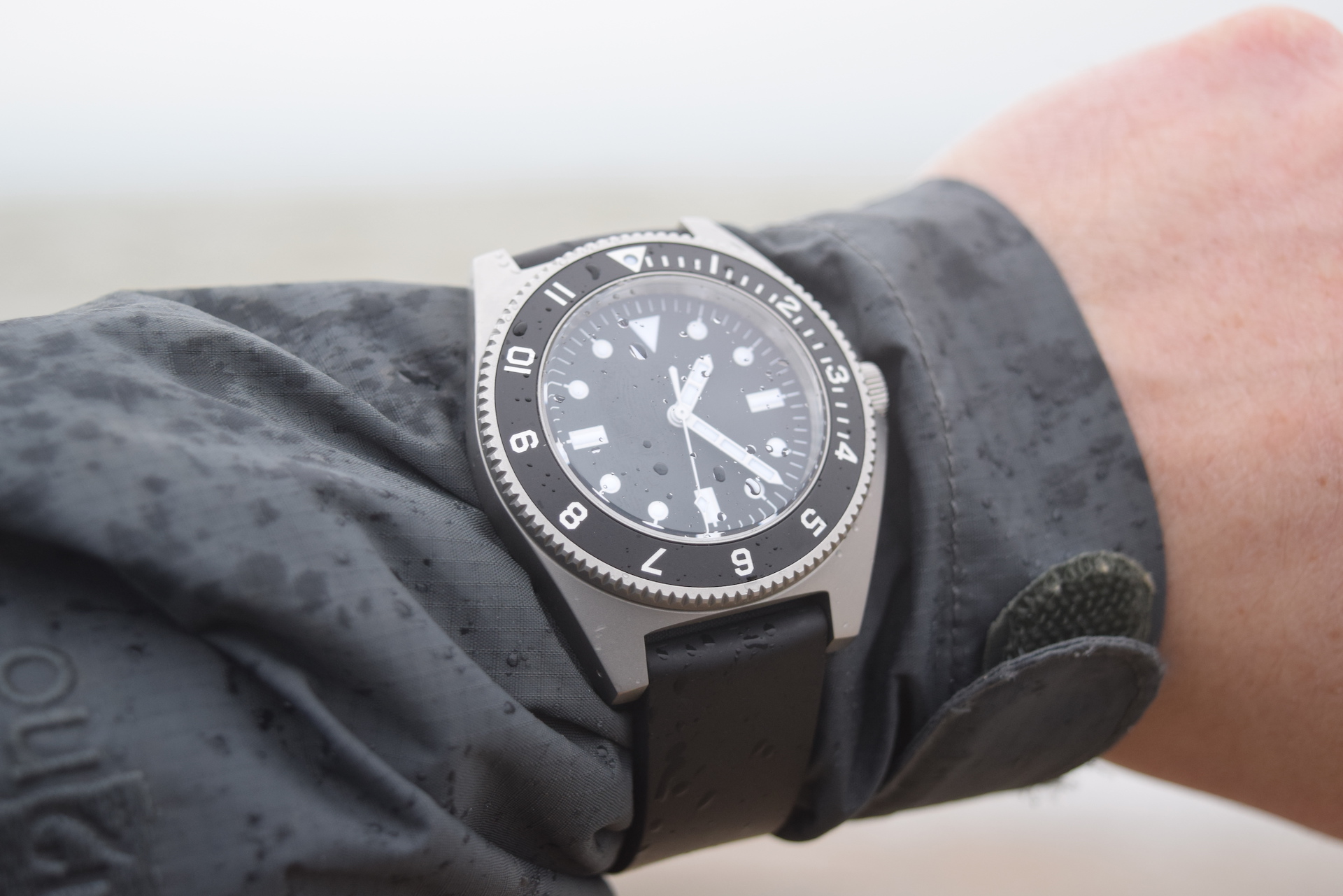
Issued military watches, though extremely cool, tend to have had the proverbial shit kicked out of them in active service, making them difficult candidates for daily wear. Enter Mk II, a brand which represents owner Bill Yao’s love affair with some of history’s most iconic tool watch designs. Mk II’s recently released Paradive Gen 3 is a near visual copy of the venerable Benrus Type I, a diver’s watch built to spec for elite American military units operating during the Vietnam War. In this wrist time review, we’ll do a deep dive into the new Mk II Paradive Gen 3 to see how it holds up in a more than ever crowded micro-brand landscape.
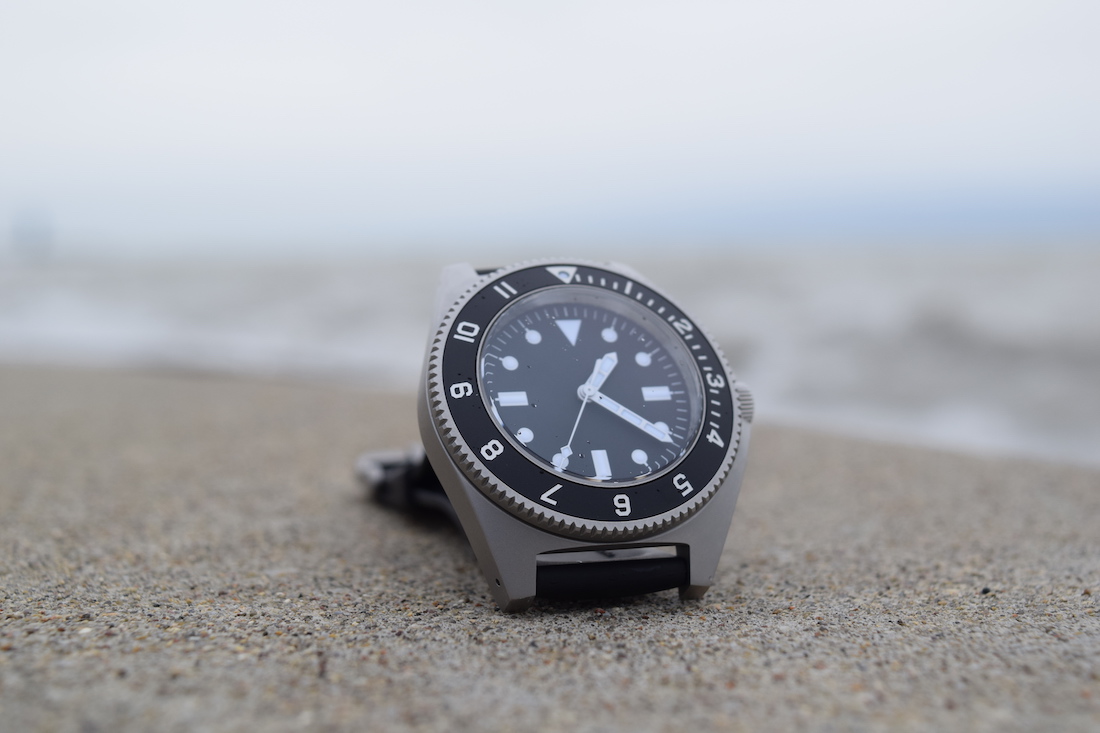
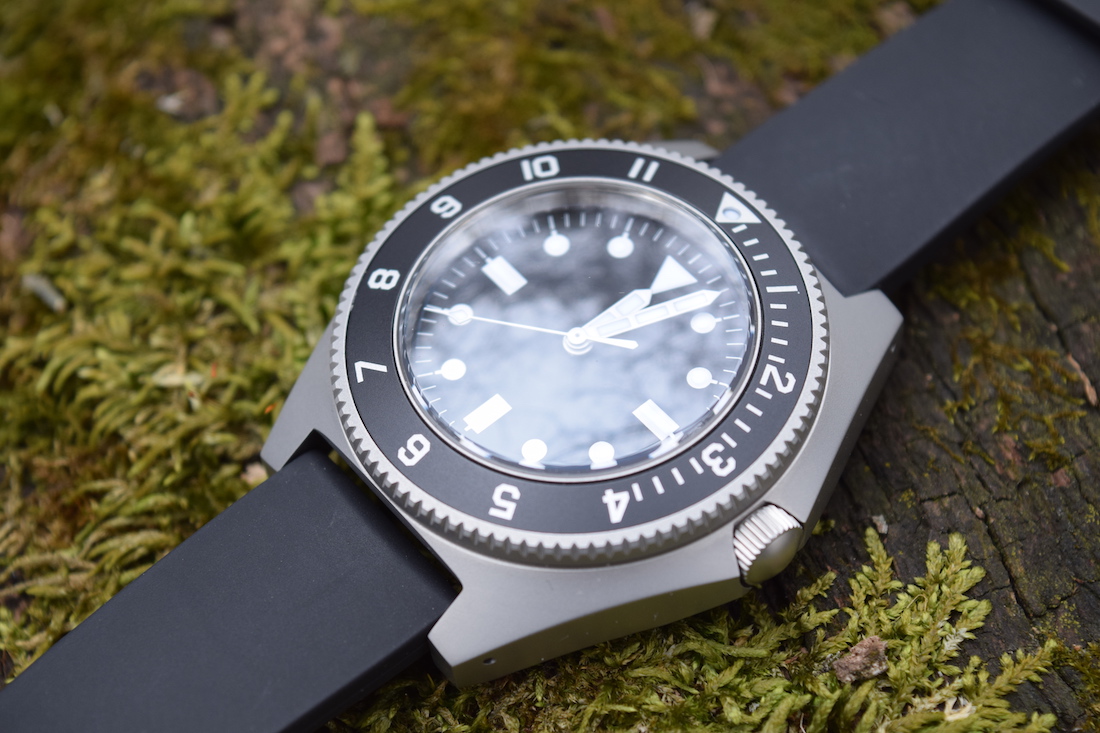
Nothing combines utility, durability, legibility, and cool-factor quite like a well-executed tool watch. Those of us who are not divers, pilots, race car drivers, or astronauts feel like they get to get in on the action of those high speed, low drag activities, even if only in watch form. Watches designed for, adopted by, and issued to various military units add an extra dose of badassery and drive an active niche in watch collecting. Unfortunately, the interest often places prices for original examples of pieces like these out of reach for most everyday collectors. Consider the astronomical sums being paid for Rolex Mil-Subs in recent years. Mk II is a brand which places modern versions of these designs into the grubby mitts of everyday collectors.
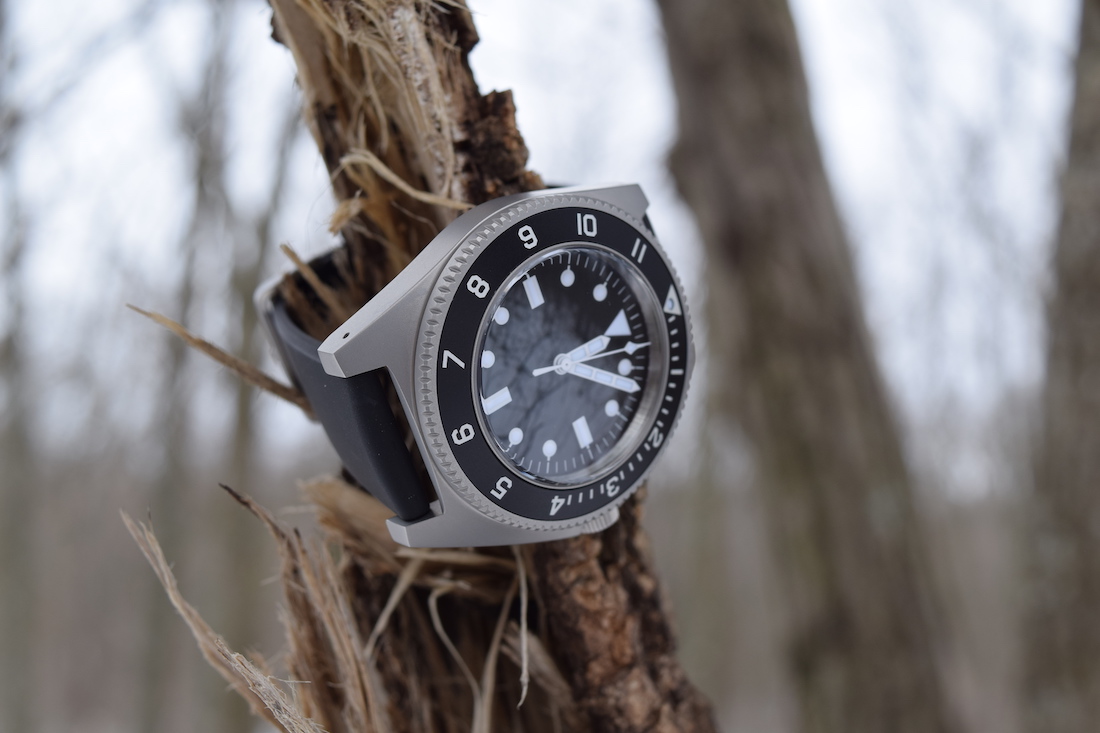
MKII Background
Before we get into the Paradive itself, we should talk about Mk II. A micro brand from before micro brands were cool, Mk II was established way back in 2002. For a micro brand, that’s ancient. More than simply “homage” watches, Mk II instead views their efforts as reimagined, technologically-upgraded takes on classic designs, which are as much nods to the past as they are forward-thinking, capable tool watches in their own right. In fact, Mk II, pronounced “mark two”, literally means “second version” in military vernacular. While we at ABTW have loved other watches from Mk II, from the original Swiss made Paradive to the heavily Submariner-influenced Fulcrum, lengthy (purportedly as long as years in some cases) wait times have complicated the brand’s past and online reputation.
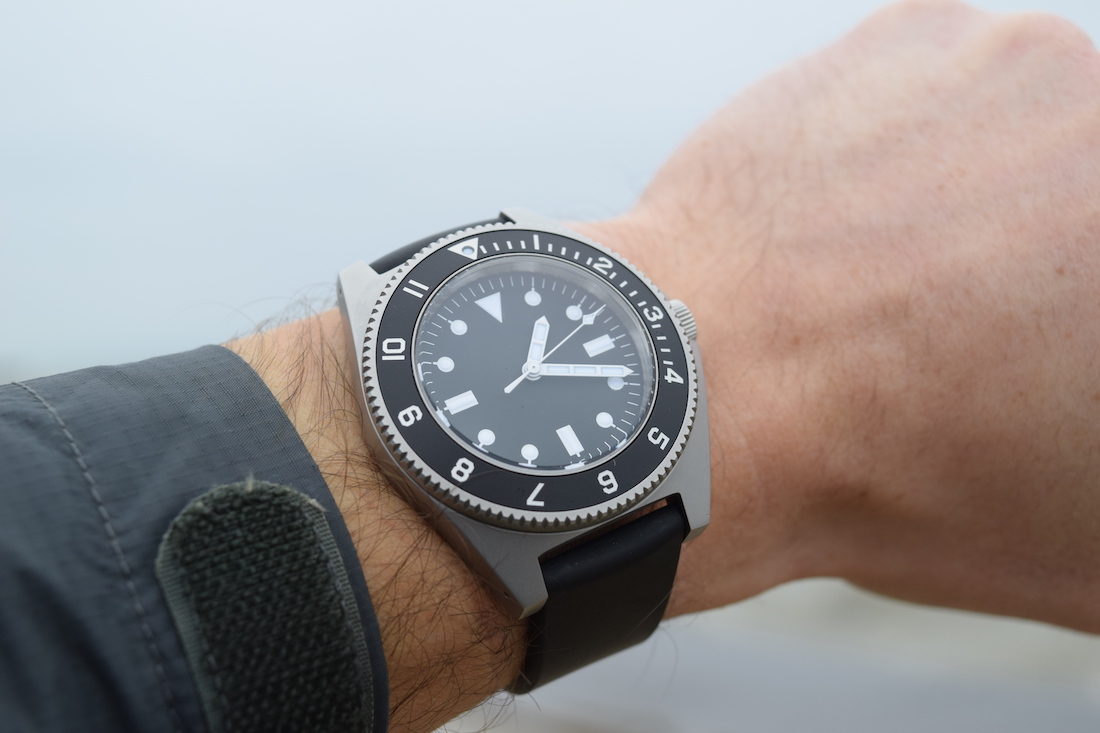
Japan to America
Recently, MKII has taken steps to limit lead times and simplify the sales process by introducing a “Ready-to-Wear” series of watches, all of which are partially pre-built in Japan with Seiko-built automatic movements, before being finished in the United States by Yao himself. It should come as no surprise that Mk II would decide to have watches built in Japan, the brand’s roots being in custom parts for Seiko watches like the fan favorite SKX series.
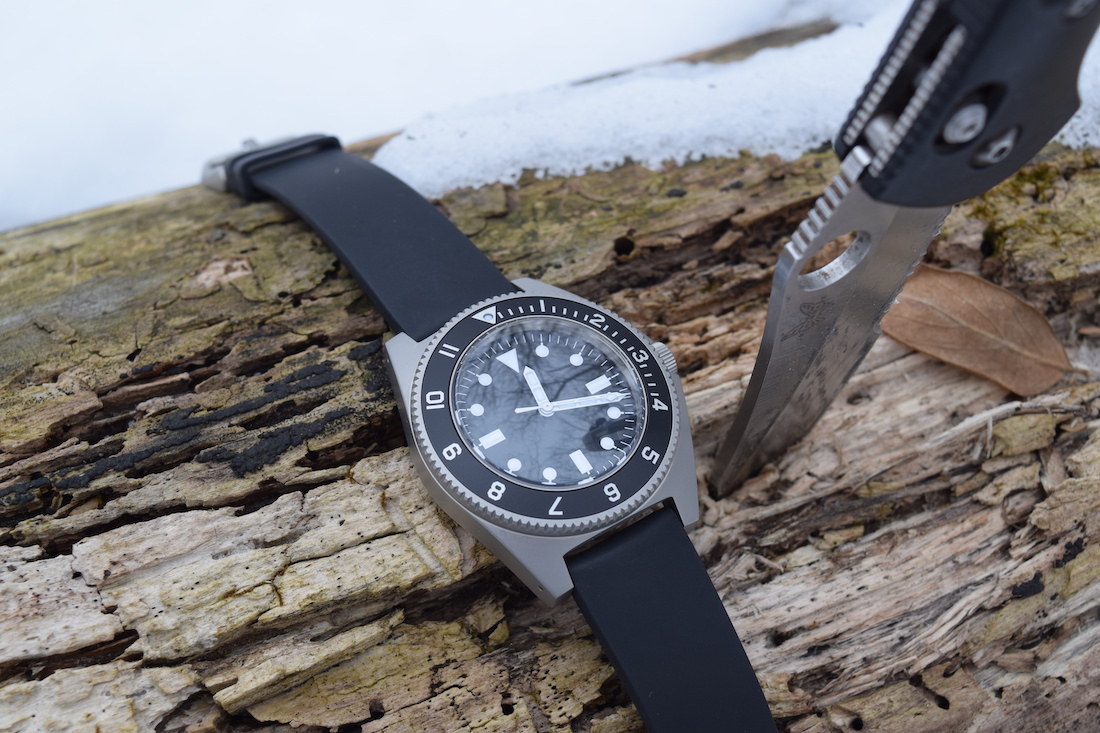
What’s more exciting is that the move to Japanese manufacture means a new lower price point for Bill Yao’s design sense and extreme attention to detail, something watch nerds can all get behind. This expositional segue is all to say Mk II is not simply an “homage” brand, but rather a modern tool watch brand that knows when to leave well enough alone with some of history’s best and most functional designs. In short, Mk II watches are at once homage watches, as well as something more functional and interesting.
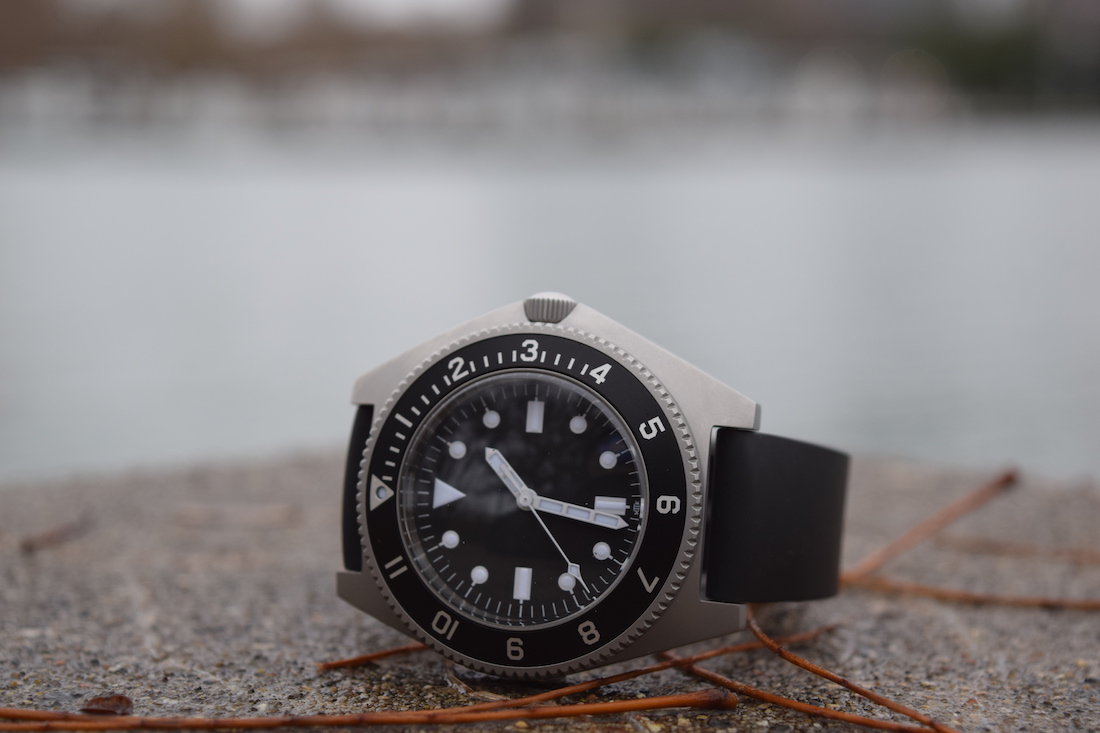
Inspired by Benrus Type I
As I’ve mentioned, the Paradive’s inspiration (which Yao calls the “reference”) is the Benrus Type I, a perennial collector favorite and one of the cleanest diving watch designs ever, period. Built by Benrus, then a major supplier of watches to the US Military, the Benrus Type I has garnered its fair share of attention in the secondary market. Prices have risen to match demand. In comparison to many other well known mil-watches, like the British Military Submariners, which were civilian models adapted to suit military service, the Benrus Type I and later Type II designs were originally outlined by the US Government in MIL-W-50717, a military-written spec outlining design characteristics for a capable diving watch fit for service in Vietnam’s challenging and often aquatic tactical environments.
The original Benrus Type I and II watches were never sold commercially, only issued to operators who used them for their intended purpose. Now that we know something about Mk II and the proud lineage behind how the Paradive’s base design came to be, let’s dig into the watch itself.
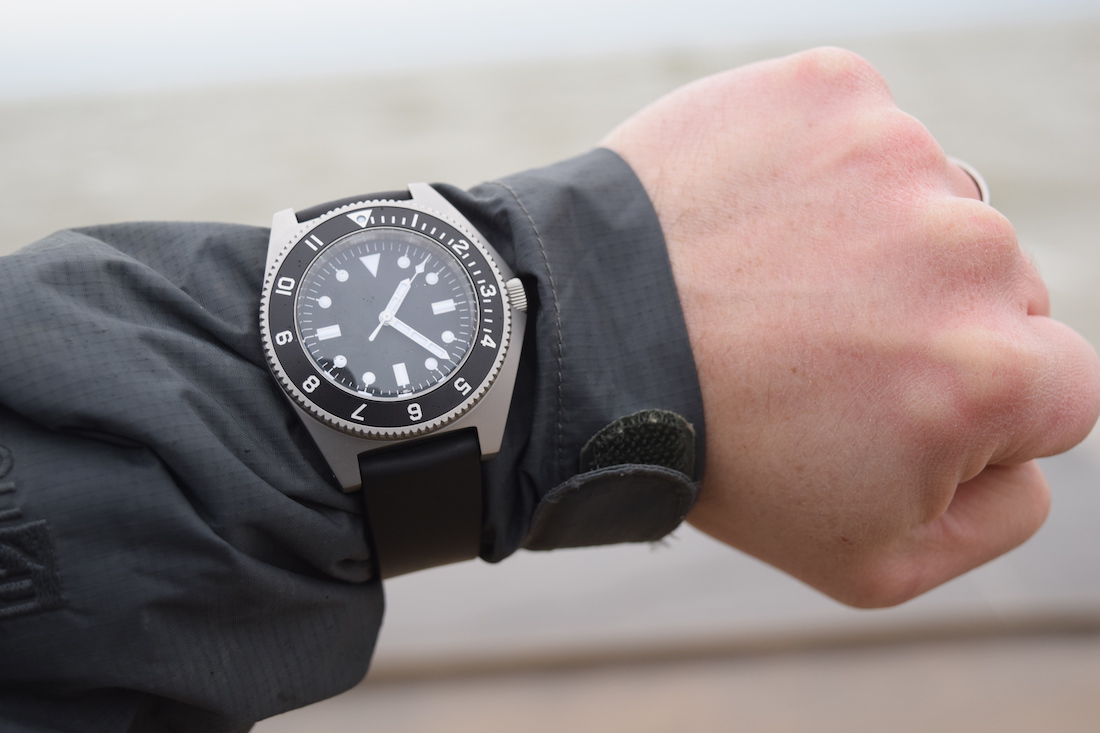
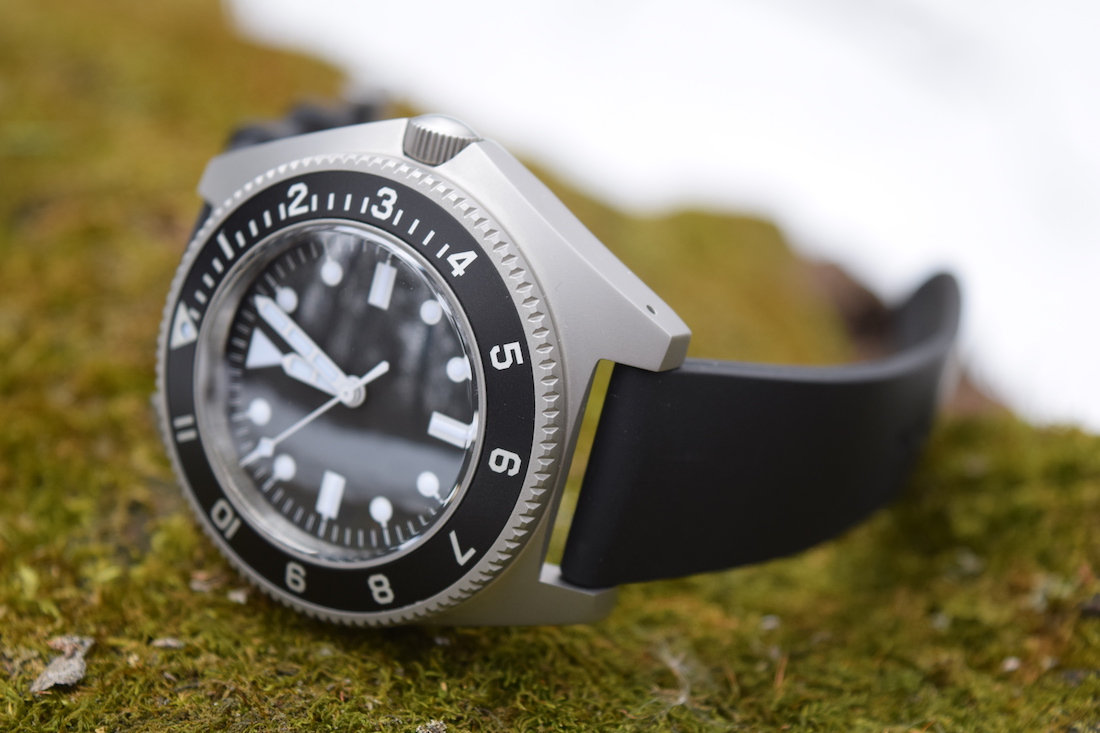
At a glance, you might say the new Gen 3 Paradive is a near perfect replica of the original, now highly collectible Benrus Type I. Speaking strictly in terms of the visual elements, you’d be right. Mk II obviously view the reference design as near perfect in the looks department, having maintained the design of the dial, case, and bezel, opting only for a more subtle update in material, size, and tech. The upgrades are more-so “under the hood” if you will. The straightforward, no-date, sterile dial on the Paradive is nearly identical to the original and all business. Lumed inlaid white ladder hands rotate over a deep matte black dial. Hour markers are classic Benrus, with dots at one, two, four, five, seven, eight, ten, and eleven o’clock, rectangular indices at three, six, and nine, and a larger triangle at noon.
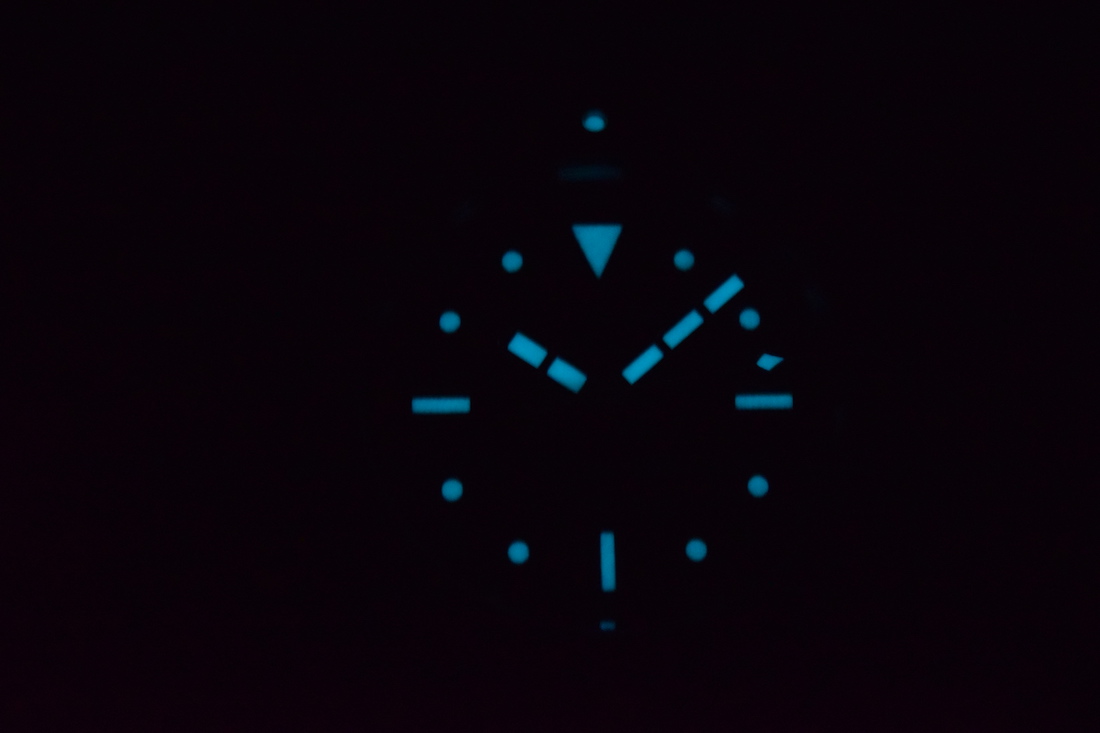
MKII Paradive Dial & Hands
Each hour marker features a somewhat restrained helping of very strong white BGW9 (which glows blue) Super-LumiNova sitting inside a printed white border. White hash marks at the perimeter serve as minute markers while an elegant, lumed seconds hand completes one of the most legible watch layouts I have come across. At six o’clock, Mk II has stealthily placed a tiny, and I mean tiny, Mk II signature in white print. That’s it. Tactical subtlety served in heaps. Everything you need to know and nothing you don’t, printed in bright white set against a deep matte black background, with SuperLuminova to retain perfect legibility through the night, whether you’re on a clandestine operation or just newborn duty. Though not designed in its essence by Mk II, this is an excellent dial for clean looks and legibility, a perfect dial for diving.
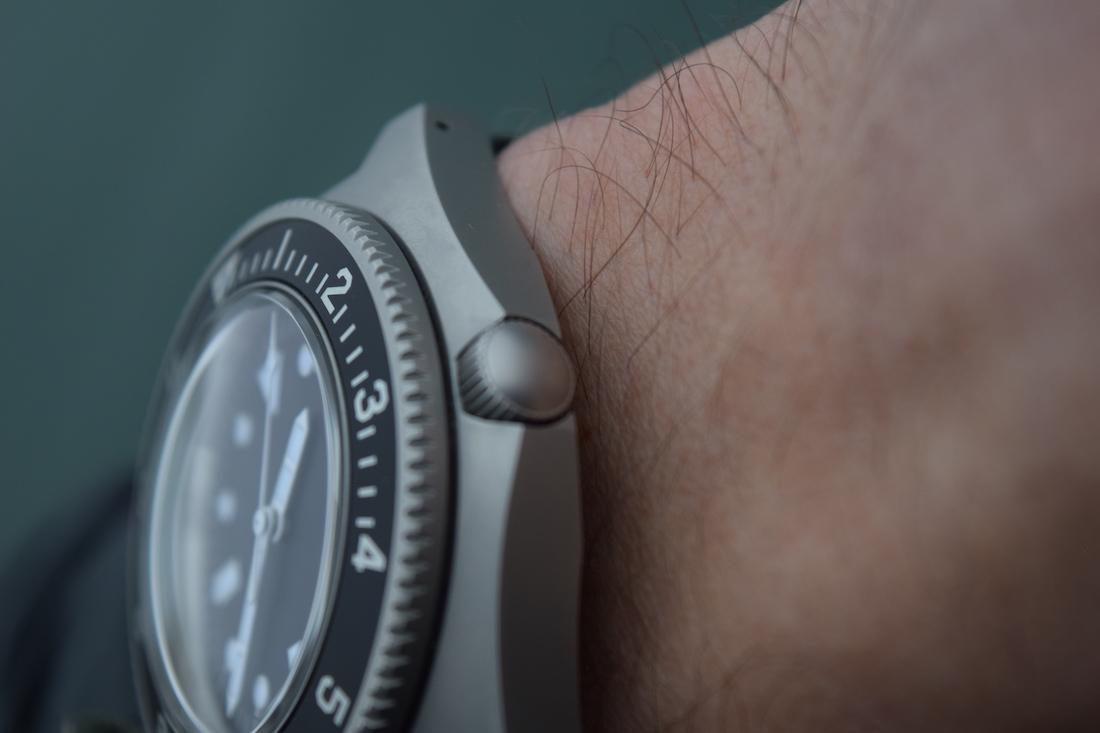
MKII Bezel
One of the most prominent aspects of the original Benrus Type I is the lumed acrylic bezel insert, designed to remain legible even as its surface became scratched from, you know, diving and Vietnam-era jungle combat and stuff. Mk II’s newest Paradive has an acrylic insert as an option, as well as other heartier options. The piece I reviewed came with an anodized aluminum, 12-hour GMT insert, just one of the choices available to Mk II customers, which also include a lumed acrylic version similar to the original as well as an aluminum sixty-minute elapsed time bezel perhaps more suited to exclusive diving duty. As collectors of original Benrus Type I and II watches will tell you, acrylic is prone to cracking, and very few perfect original bezels remain. Mk II’s decision to refine the design with a more durable aluminum insert perfectly demonstrates Bill Yao’s ability to tastefully add to or bolster existing designs without losing the spirit of a watch’s original look.
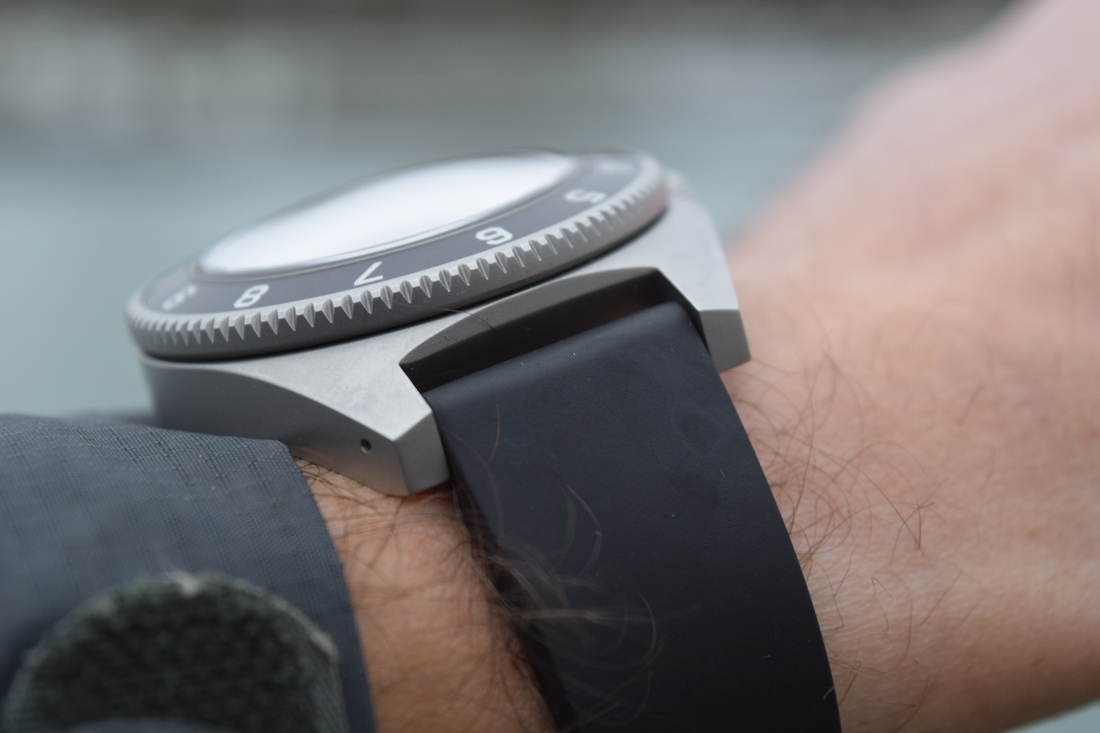
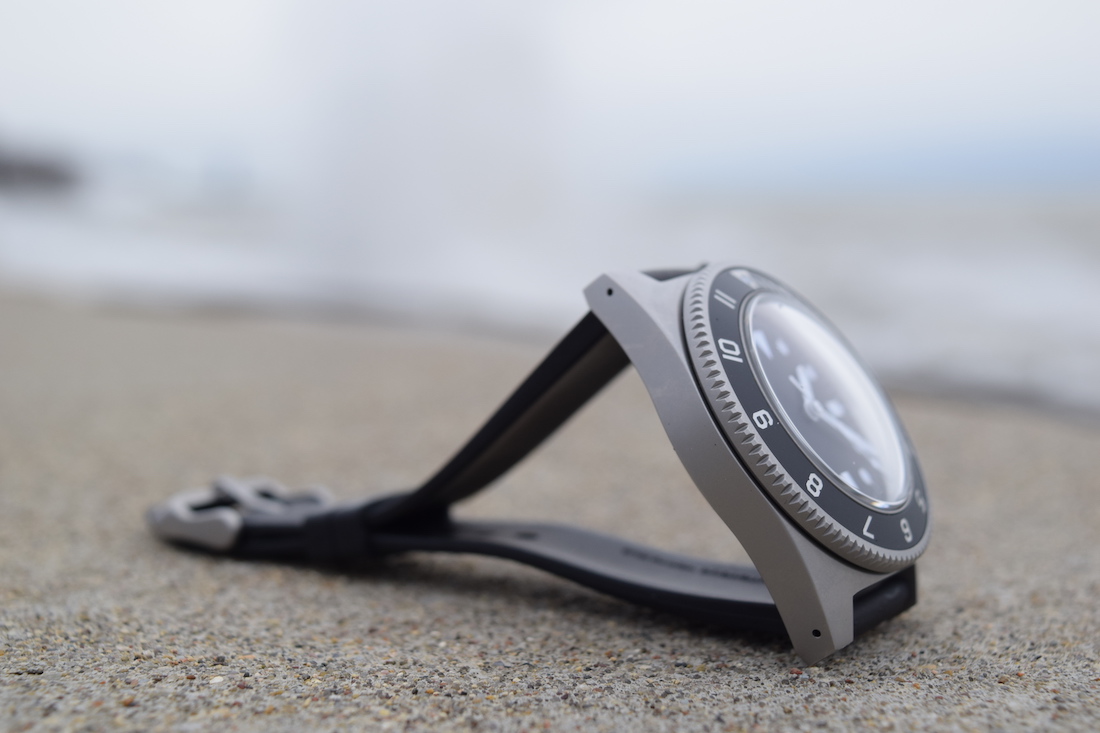
As a note, Internet trolls might tell you a real diving watch requires an elapsed time bezel, and that the 12 hour GMT bezel version of the Paradive (the one visually most like the original Benrus Type I) excludes it from real diving duty. I’ll say it like this: the original design of the Benrus Type I was used by US Navy SEALs, Navy Divers, Army Special Forces operators and various other barrel-chested, aquatic military members with a level of underwater effectiveness which saw the design issued for twenty-odd years. The most important part of an elapsed time bezel is a twelve o’clock indicator, which allows for easy minute calculation for anyone versed in reading, writing, and arithmetic, the three R’s. If anything, the 12-hour version helps the Paradive (and Benrus which came before) to straddle the line between pure diver and tactical field watch, given the utility of the GMT function.
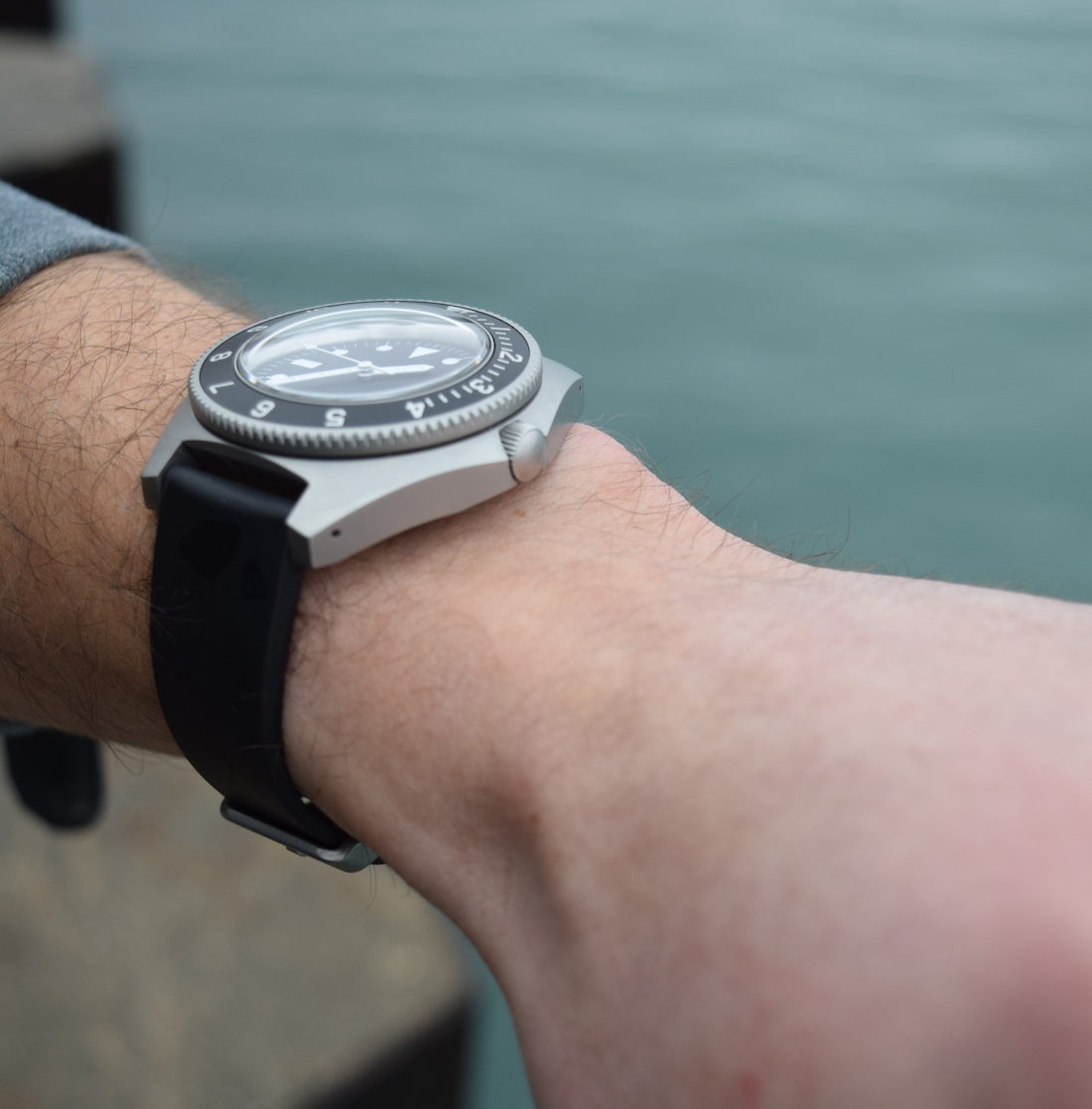
Interestingly, when I was selecting a version of the new Paradive to review, Bill said he recommended the aluminum insert model over the acrylic, which he said was perhaps not as durable for actual diving purposes. While I have a hard time imagining it’s all that fragile underwater, and Bill didn’t elaborate on why it is worthy of notice for the extreme few buyers who might go diving with the watch. Bezel operation is frankly perfect on the Paradive, with sixty distinct unidirectional clicks, no play, and absolute laser-like dead-on alignment at the twelve o’clock position, a Mk II signature and indication of Yao’s legendary attention to detail.

If anything, the Paradive’s bezel action feels a bit hollow in the best way, the way many vintage divers do. I’d wager this is no accident. The original Benrus Type watches had friction operated bi-directional rotating bezels, and the move to indexing is yet another very subtle update in the Mk II spirit. The insert sits atop a true-to-form bead blasted stainless steel bezel with deep notches at its perimeter which are easy to grab with or without gloves and underwater or on the surface.

MKII Paradive Case
The general case shape of the Paradive is very similar to the original Benrus, other than a slight upsize from the reference 40mm to a more up to date 41.25mm at the bezel. The case itself is a few millimeters wider given its shape. Asymmetry is another cool case feature, with an extended case shape which also acts as a serious set of crown guards for the screw down crown. This design keeps the crown from digging into the back of your hand as you’re doing cool tactical things, or even just regular things.
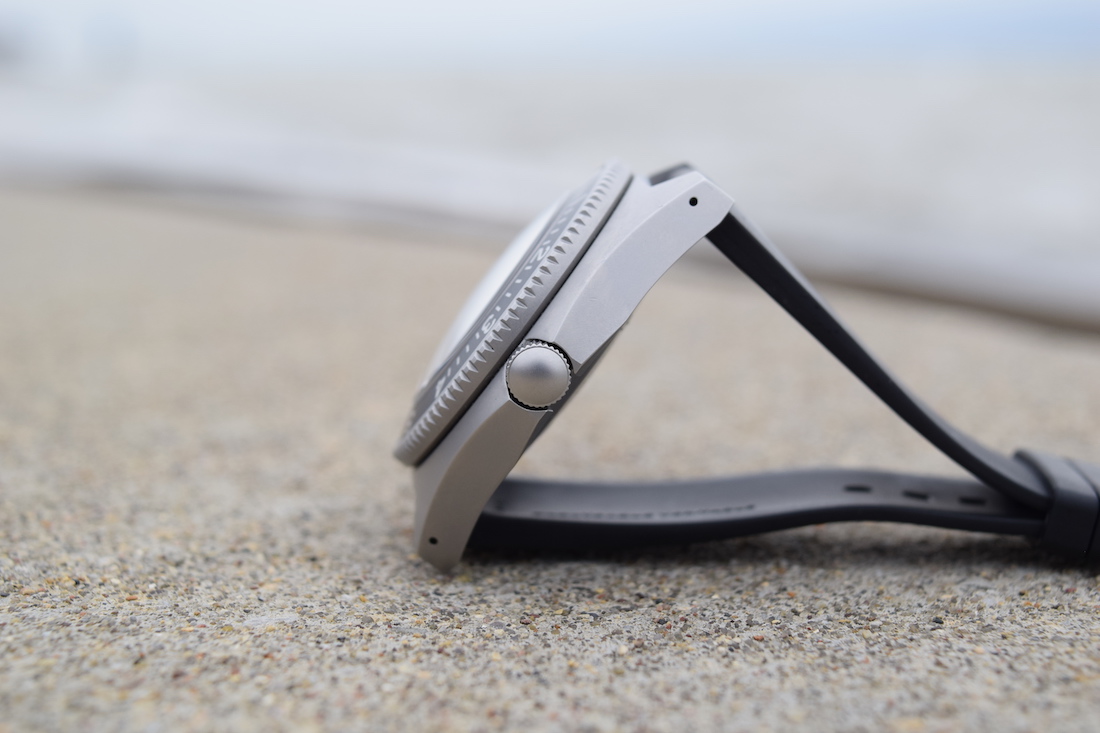
Case finishing is simple, with no major bevels or complicated or ornate case shaping to be found. Bead blasting is used all over the 316L stainless case for a low reflectivity and very durable finish. Drilled lugs are also a highlight as always and allow for both easy strap changes and the use of extremely secure shoulder-less spring bars, good news for all the desk divers who claim to have lost their Rolex Deepsea due to an unfortunate spring bar accident at two hundred feet while breathing nitrox and battling the Kraken.
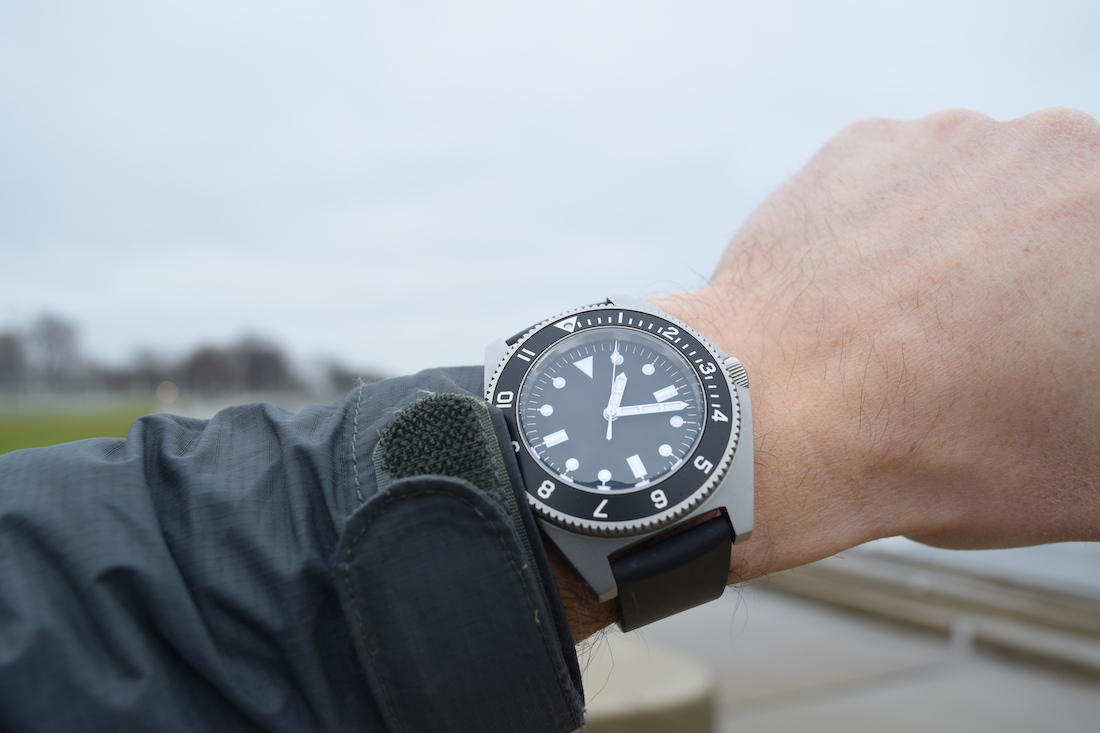
MKII Paradive On The Wrist
Given the robust design and materials used, it’s no shocker that although I’ve been wearing the heck out of my Paradive at home and at work as a commercial diver, I’ve yet to cause it any noticeable harm despite the occasional clash with door frames or other pointy diving or construction stuff. Lug to lug is a reasonable 49.5mm, making the watch a comfortable option for wrists of all sizes and shapes, especially given the slight curve of the case from end to end. Thickness is significant, however, at 15.54mm, most of which comes from the highly domed and anti-reflective coated (on the inside only, duh…) sapphire crystal, which is also perfectly executed in shape and style.
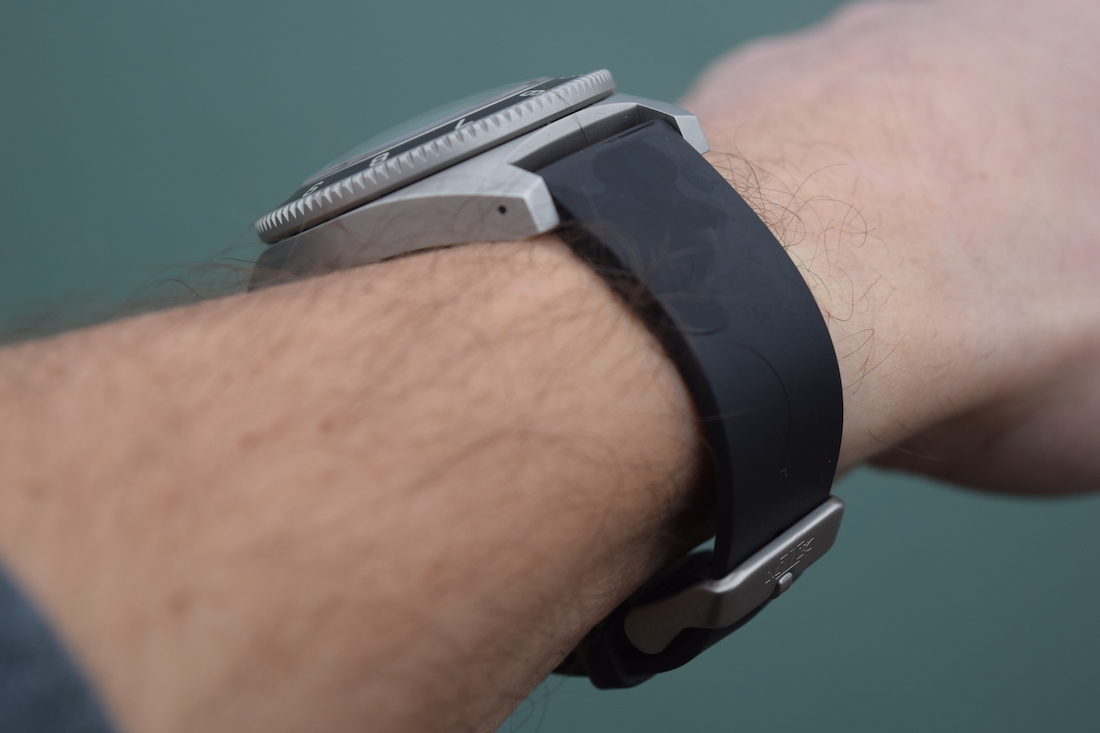
On the wrist, you don’t really notice the height, and the Paradive doesn’t grab sleeves or anything else. The domed case and crystal design make it feel low profile, even with the extra height provided by a NATO strap. Comfort is key with the Paradive. Even though Mk II’s take on the classic Benrus design is upsized, however slightly, the watch doesn’t feel large even on my very spindly 6.25” wrist. It’s just right and can be worn comfortably all day and night, especially on a nato strap or the also excellent included rubber strap. Where many will consider most of the changes in the new Ready-to-Wear lineup to be relatively minor, the shift to Japanese movements is worthy of some consideration.
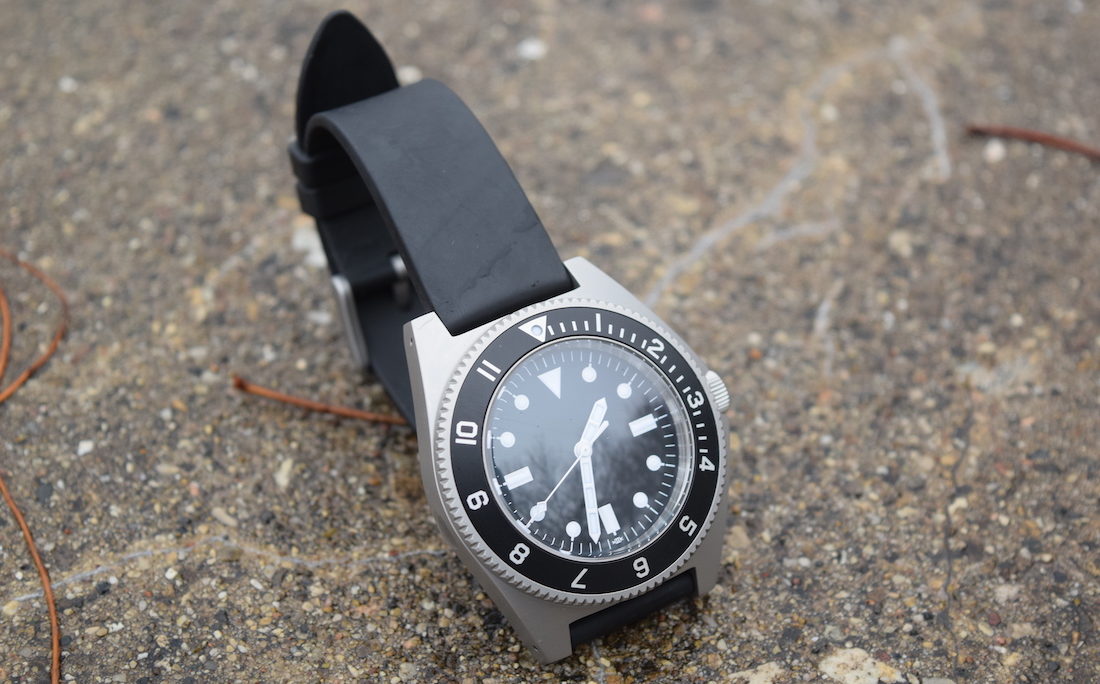
MKII Paradive Movement
In years past, Mk II have used Swiss-made movements such as the ubiquitous 2824 or the 2892 from ETA. Bill Yao has also always taken the extra time to adjust his movements in five positions, all but ensuring capable, accurate timekeeping for the long haul. Bill cares about what powers his watches, since a good tool watch is only as good as its ability to reliably convey the time of day or dive, no matter how hearty or well built the rest of the watch may be. The new Paradive Gen 3 runs on the Made in Japan SII NE15, an unsigned Seiko-built automatic caliber featuring quickset date, a hacking function, 21,600 vph, and an impressive for the price 50-hour power reserve, likely due to the somewhat reduced rate.
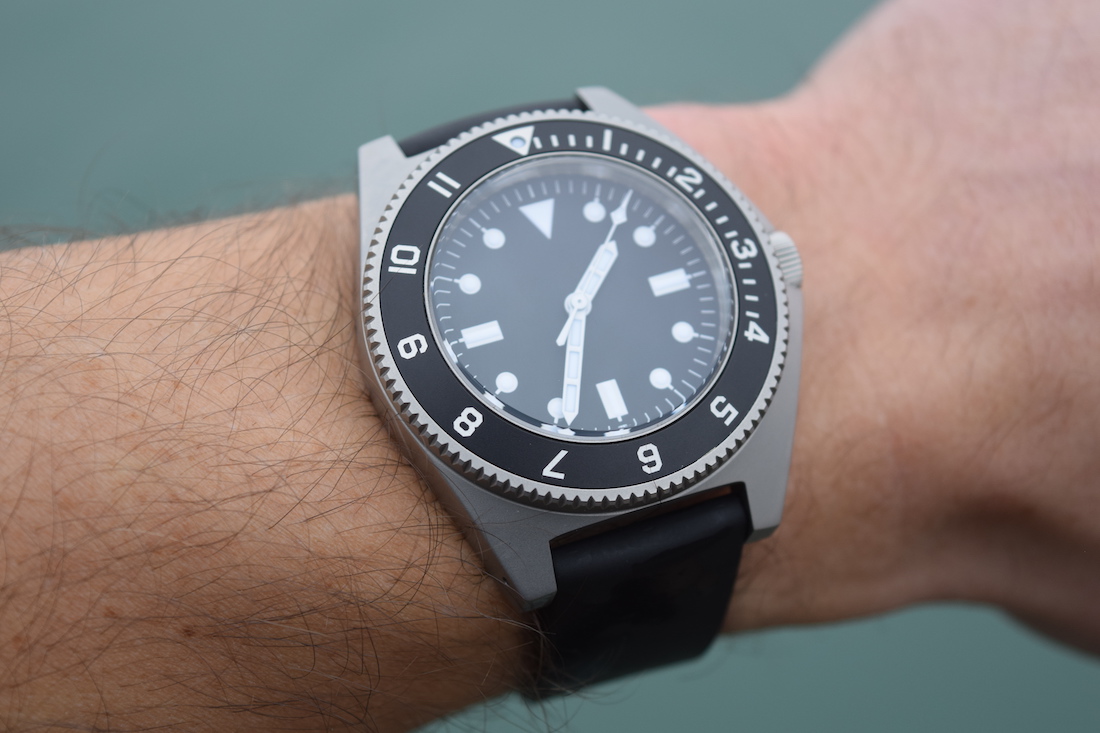
Mk II once again takes the time to adjust the movements in five positions before sending the watches out, and if you were ever to remove the screw-down caseback, you’d be treated to unnecessary but nice Côtes de Genève finishing on the Mk II signed rotor. The Swiss vs. Japanese movement argument has been hashed out all over the internet, and I’ll spare the reader here. Suffice to say many well-made Japanese movements are becoming commonplace in more watches, and especially micro brand watches, due to their lower cost, capable performance, durability, and easy availability. So, for me, if the watch works flawlessly, winds, sets, and keeps near perfect time, all of which the Paradive’s NE15 does, and it also costs less than a watch with a comparable Swiss movement, I’ll be choosing Japanese every single time, a decision Bill Yao appears to agree with.
If you haven’t caught on yet, I’m really trying to convey the attention to detail Bill Yao puts into his designs. From material selection, to design, to quality control (Mk II has a ridiculous scrap rate for very slightly imperfect parts most brands would probably include anyway), to packaging, and all the way to straps, Bill really goes after the complete watch experience. The Paradive Gen 3 also allows for choice in the strap department, being available either on a stock black 20mm nato or a natural rubber strap with a signed stainless steel buckle.
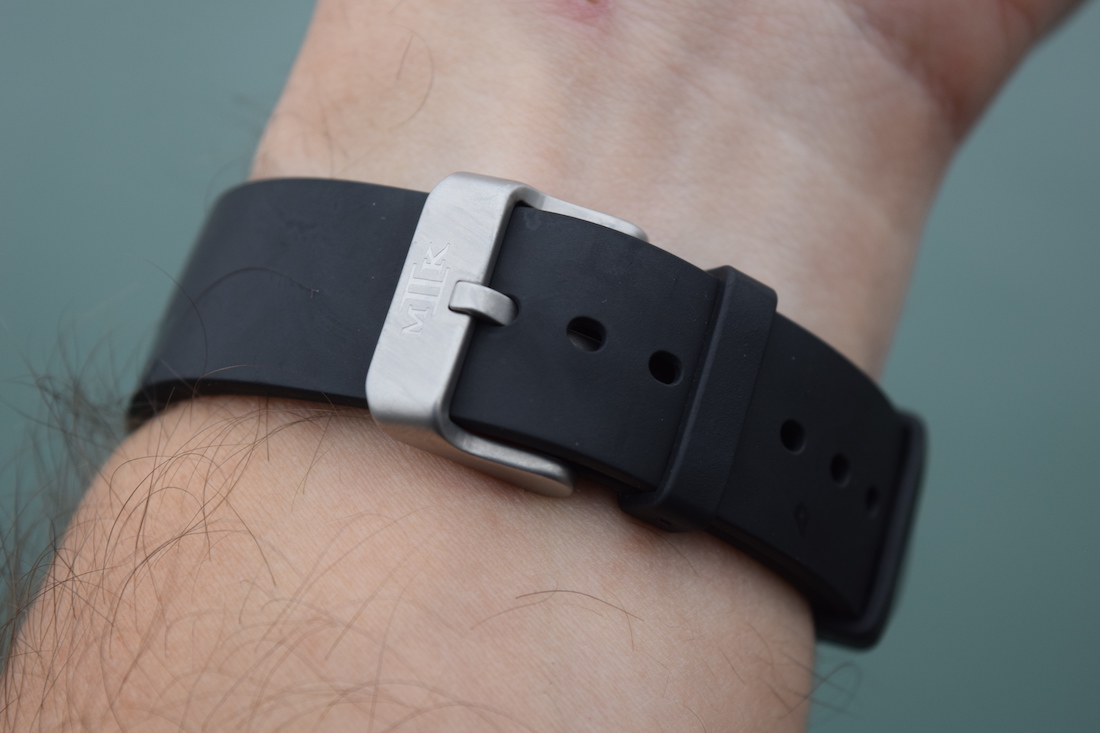
The Strap
Because I, like many of you out there, have about 100 nato straps around, I elected for the natural rubber strap. This rubber strap is, in a word, excellent. Though thinner than most current offerings, and somewhat hollowed out in shape on the inside, it’s insanely comfortable. With almost no break in time, the strap hugs the wrist and is comfortable in all conditions. Its subtle, straightforward looks also compliment the feel of the Paradive well, with a matte black strap to match the matte black dial. While I haven’t tried Mk II’s nato, I’d be willing to bet it’s a good one, and any other 20mm NATO or Zulu will do the trick just as well while also adding security to the aforementioned sad masses who claim to have lost watches due to spring bar malfunction.
While I don’t normally comment on packaging, as I write for aBlogtoWatch and not aBoxtoWatch, Mk II’s Pelican-style, foam lined box is really nice and worthy of special mention. Mk II also includes a little card with the watches daily rate after adjustment in various positions, a nice touch, as well as several pairs of both shoulder-less and standard spring bars. Mk II doesn’t have to do things like this, but I like that they do.
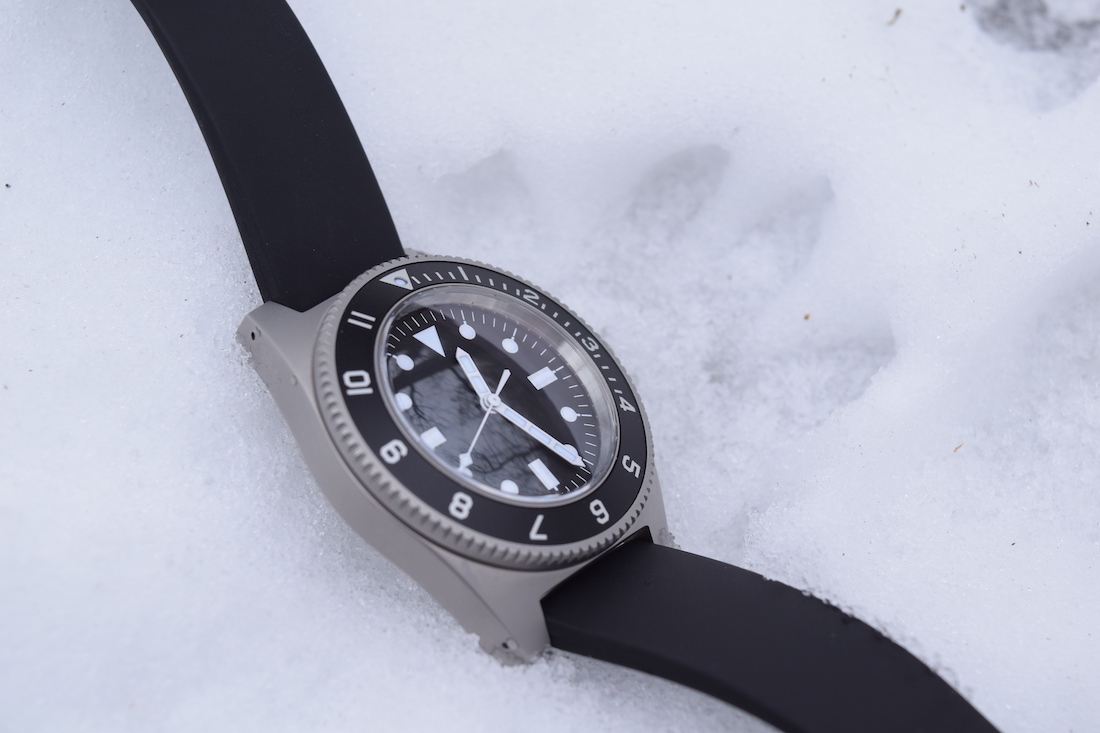
Final Thoughts
Mk II’s Paradive Gen 3 is a great tool watch. By drawing on a truly classic design based on pure operational military need, and reimagining it with modern day watch knowhow and a keen sense of detail, Mk II have knocked it out of the proverbial park with their new Paradive. For divers, outdoorsmen, adventurers, military operators, or just weekend warriors, the Paradive is a more than a solid choice for its rugged looks, durability, and quality timekeeping.
Where Mk II has missed before with vague timelines and forecasted ship dates, the new Ready-to-Wear line looks to have vastly improved the issue of waitlists and backlog. While I did wait a few months for the Paradive to arrive, I immediately forgot any frustration I may have felt when I strapped it on. If you’re into military-style tool watches, it’s really that good. At $895, the Paradive isn’t necessarily a steal, but for a near perfect modern execution of a truly iconic watch design with interesting military heritage, it’s worth every penny. You can learn more at mkiiwatches.com
